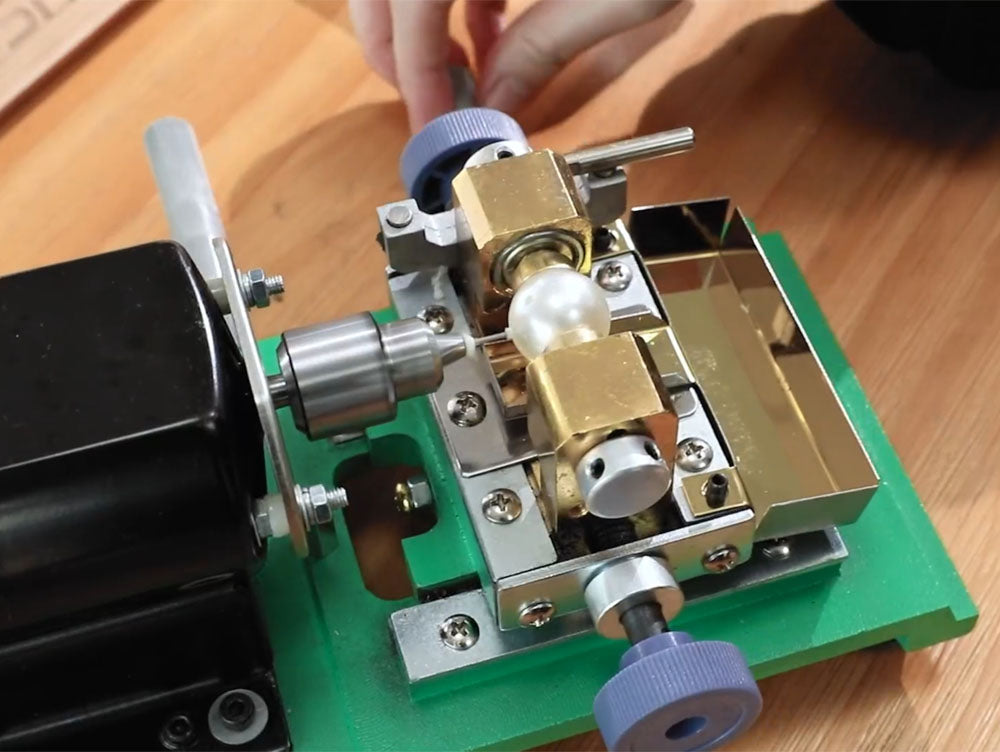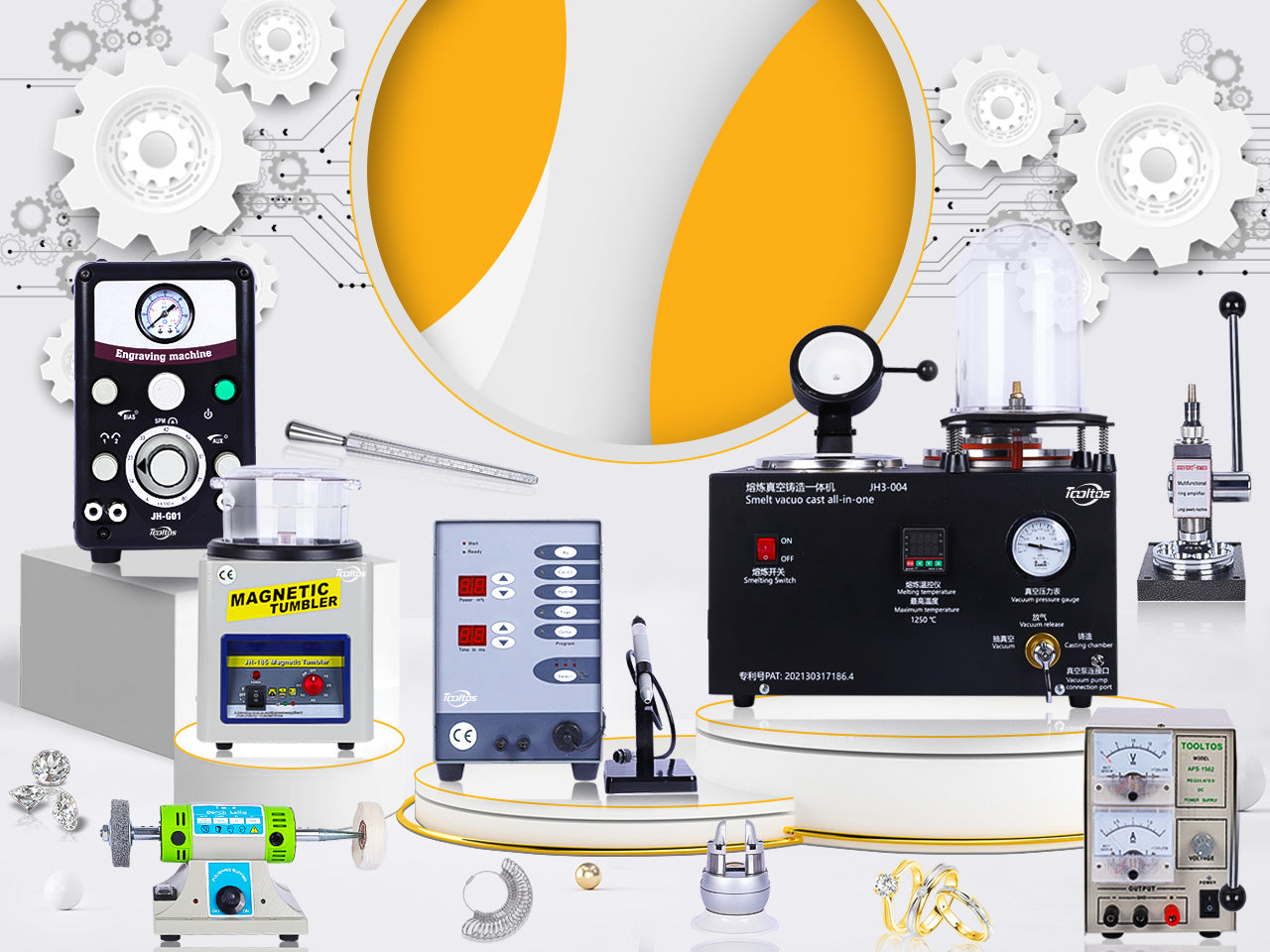Voici un aperçu complet des perceuses pour bijoux : leurs principes de fonctionnement, leurs composants clés et leurs applications pratiques dans le processus de travail du bijoutier moderne. Que vous perciez des tôles délicates, des pierres précieuses ou que vous produisiez vos propres perles, comprendre le fonctionnement de ces machines et savoir les utiliser efficacement et en toute sécurité vous aidera à gagner en précision et en efficacité.
Résumé
Les perceuses pour bijoux vont des petites perceuses d'établi aux pièces à main à arbre flexible, en passant par les micro-perceuses spécialisées. Fondamentalement, elles convertissent toutes la puissance du moteur en rotation contrôlée de la broche, avec une vitesse réglable, des systèmes de serrage et des structures de support stables pour guider la mèche. Un réglage approprié (choix de la mèche, de la vitesse, de la lubrification et du montage) permet aux bijoutiers de percer les métaux, les pierres, les plastiques et les objets trouvés avec un minimum d'arrachement ou de dommages thermiques. Les machines modernes intègrent souvent des variateurs de vitesse (1 000 à 4 500 tr/min et plus), des butées de profondeur et une rotation réversible pour effectuer des tâches allant du simple perçage à l'alésage de billes avec des mèches abrasives diamantées. Grâce à un entretien régulier (nettoyage, lubrification des roulements et inspection du mandrin) et à une technique correcte (vitesses d'avance constantes, fluides de refroidissement et serrage sûr), les perceuses deviennent indispensables pour la fabrication d'anneaux brisés, le sertissage de pierres, l'alésage de perles et le prototypage de nouveaux composants.
Principes de fonctionnement
Contrôle du moteur et de la vitesse
Les perceuses de bijouterie utilisent soit des moteurs à courant continu à entraînement direct (comme pour les accessoires à arbre flexible), soit des moteurs à courant alternatif pour les presses d'établi. Des variateurs de vitesse permettent d'ajuster la vitesse de rotation de la broche en fonction du matériau et de la taille de la mèche : vitesses lentes (500 à 1 500 tr/min) pour les pierres ou les filigranes délicats, vitesses élevées (3 000 à 5 000 tr/min) pour les métaux et les plastiques. Les micro-perceuses dépassent souvent 10 000 tr/min pour les travaux de précision.
Mécanisme de broche et de mandrin
La broche rotative maintient votre foret grâce à un mandrin (à clé, sans clé ou à pince). Les mandrins à clé assurent une prise solide pour les forets de plus grande taille. Les pinces, utilisées sur les pièces à main à arbre flexible, permettent des changements de foret rapides, mais nécessitent une taille de pince adaptée au diamètre de la tige du foret.
Contrôle de l'alimentation et de la profondeur
Les presses d'établi et les perceuses à colonne sont équipées de tables à crémaillère ou de butées de profondeur pour contrôler la course verticale. Cela garantit une profondeur de trou constante et évite de percer excessivement les supports sous-jacents. Les pièces à main à arbre flexible nécessitent l'habileté de l'opérateur et une pression manuelle constante.
Composants clés de la machine
Types de perceuses à bijoux
1. Perceuse à colonne d'établi (mini-perceuse à colonne)
-
Caractéristiques : De plus petite taille, peut être placé sur la surface de l'établi, n'occupe pas d'espace.
-
Cas d'utilisation : perçage de trous pour anneaux de jonction, réalisation de trous pour perles dans du verre ou des objets trouvés, perçage de tôles.
-
Avantages/Inconvénients : Stable et précis ; course limitée (~40 mm de course).
2. Perceuse à colonne (montée au sol)
-
Caractéristiques : Capacité et course plus importantes, construction en fonte lourde, moteurs puissants.
-
Cas d'utilisation : composants plus grands, matrices d'établi en acier, perçage de trous profonds.
-
Avantages/Inconvénients : Excellente stabilité ; prend plus de place au sol.
3. Pièce à main à arbre flexible avec accessoire pour perceuse à colonne
-
Mécanisme : Pièce à main branchée sur un moteur à arbre flexible ; l'accessoire la maintient comme une petite presse.
-
Cas d'utilisation : Tâches de bijouterie polyvalentes : perçage, gravure, travail de bavure.
-
Avantages/Inconvénients : Polyvalent ; la précision du roulement est limitée par les tolérances de la pièce à main.
4. Micro-perceuse à colonne dédiée
-
Caractéristiques : Vitesses élevées (jusqu'à 20 000 tr/min), petites tailles de pinces, roulements de précision.
-
Cas d'utilisation : Perçage micro-pavé, usinage de pièces horlogères, détails ultra-fins.
-
Avantages/Inconvénients : Extrêmement précis ; coût plus élevé.
Utilisations courantes dans la fabrication de bijoux
Perçage du métal
-
Trous pour anneaux ouverts, crochets d'oreilles et rivets en argent, or et métaux communs. Une lubrification adéquate (huile légère) évite la surchauffe et l'ébavurage de la mèche. .
Perçage de perles et de pierres précieuses
-
Utilisation de forets diamantés ou hélicoïdaux pour percer des trous dans l'opale, le jade et les perles de verre. Les gels réfrigérants ou les bains-marie réduisent la chaleur et préviennent les fissures.
Création de composants personnalisés
-
Perçage d'objets trouvés (coquillages, bois, os) pour les transformer en perles et pendentifs.
Perçage et mise en page
-
Trous de départ pour perçage à la scie ; marquage des grilles ou des réglages des pierres de canal.
Alésage et contre-alésage
-
Alésage de trous de perçage perlés à des diamètres précis ; réglages de contre-alésage avant les têtes de rivets ou les inserts de vis. .
Meilleures pratiques et sécurité
-
Sélection de bits et correspondance de vitesse
-
Adaptez le matériau de la mèche (HSS, carbure, diamant) et la vitesse de rotation au substrat. Vitesses lentes pour les pierres ; plus rapides pour les métaux.
-
-
Serrage et fixation
-
Utilisez un étau d'établi, un bloc d'outillage ou un mandrin à trois mors pour empêcher la pièce de tourner. Ne la tenez jamais à la main.
-
-
Lubrification et contrôle de la poussière
-
Appliquez des fluides de coupe pour le métal et de l'eau pour la pierre pour prolonger la durée de vie du foret et améliorer la finition de surface.
-
-
Équipement de protection individuelle
-
Portez des lunettes de sécurité ou des écrans faciaux, des masques anti-poussière pour les particules fines et des vêtements amples et sécurisés.
-
-
Entretien
-
Nettoyez les mandrins et les pinces de serrage des débris ; lubrifiez la colonne et les roulements ; inspectez régulièrement les balais du moteur (arbres flexibles).
-



0 commentaire